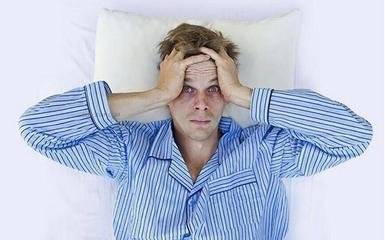Prostate enlargement, also known as hyperplasia. The symptoms mainly manifest in two groups: one is bladder irritation symptoms; the other is obstructive symptoms due to prostate enlargement blocking the urinary tract. Bladder irritation symptoms: frequent urination, urgency, increased nocturnal urination, and urgent urinary incontinence. Frequency of urination is an early signal of prostate enlargement, especially an increased number of nocturnal urinations has clinical significance. The disease has three main features: enlarged prostate volume; bladder outlet obstruction; difficulty urinating, frequent urination, urgency, and other lower urinary tract symptoms. If symptoms are detected, it is recommended to seek medical examination and treatment promptly to avoid delays in treatment and health impacts.
How to determine prostate enlargement
1. Urination is not smooth. Deciding one of the criteria for male prostate enlargement; it can also be determined by observing whether men experience difficulty urinating. Due to the compression of hyperplastic tissue, men’s urethra is compressed, leading to difficulty urinating. Patients often need to wait for a few minutes during urination, and the urine stream becomes thin, weak, and short-ranged.
2. Increased urination frequency in males. Men with prostate enlargement initially present with urinary frequency, namely an increase in the frequency of urination. Among prostate enlargement patients, urinary frequency is an early “sign” of the disease, and an increased number of urinations is one of the criteria. Particularly, increased nocturnal urination frequency is more clinically significant.
3. Urinary incontinence. In more severe cases of male prostate enlargement, urinary incontinence symptoms may also occur. Experts point out that when patients involuntarily leak urine, it is very likely a case of prostate enlargement.
How to treat prostate enlargement?
Acupuncture therapy
1. Acupoints like Guan Yuan, Qi Hai, Ming Men, Shenshu, Pangguang, and Sanyinjiao, 2-3 acupoints each time, used alternately.
2. Ear acupuncture using acupoints like Kidney, Bladder, and Sympathetic, treated with Wang Buliu Xing adhesive pressure therapy.
3. For acute urine retention, acupoints like Zhongji, Pangguang, Yinlingquan, and Sanjiaoyu are heavily stimulated. For patients who still have difficulty urinating after removing the catheter, a combination of treatments can be used.
Dietary therapy
Foods with therapeutic effects on prostate enlargement include winter melon, kelp, bitter gourd, plantain herb, purslane, cucumber, etc. Or choose corresponding cooking methods and dishes based on different dietary habits.
Drug therapy for prostate enlargement
Currently, drugs for treating prostate enlargement are divided into three categories based on three pathological changes related to the symptoms of prostate enlargement: drugs acting on cholinesterase, α1 receptor blockers, and drugs that reduce prostate volume.
Laser therapy for prostate enlargement
Laser therapy for prostate enlargement mainly utilizes its photothermal and photomechanical effects. Continuous wave laser surgical knives are often used in the treatment of prostate enlargement.


